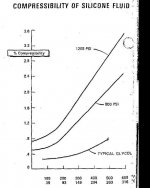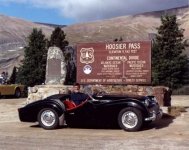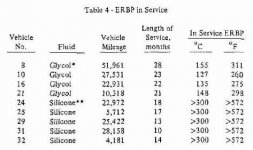lbcs_r_fun
Jedi Hopeful
Offline
We have now finished replacing the brake and clutch hydraulic systems on our TR3A project. We replaced just about everything, including lines, unions, master cylinders, fluid reservoir, wheel cylinders and the calipers were re-built. We even did a leak-down test with dry shop air.
Last night we filled the reservoir (new) with Dot 5 and started bleeding (conventional two person method). Before we started bleeding we waited a couple of hours to allow for some of the air bubbles to escape from the reservoir. Starting with the furthest wheel cylinder, we bled the rear brakes and got lots of air out of the system. We continued with the front calipers and did the driver side first, OK. When we got to the passenger side caliper, we hit a snag. No matter how many times we went through the bleeding process (three reservoir refills) we continued to see air bubbles. It seemed as though we were introducing air back into the system. No clue how this could happen unless the M/C seal was leaking! Throughout the process we had a third helper monitoring the fluid level in the reservoir. It never got below one third full.
So, we are sitting here scratching our heads! So, before we invest in a fancy pressure bleeder, "Speed Bleeders" or other fancy gadgets, what about <span style="font-weight: bold">"gravity bleeding"</span>. The posts I have read on the various motor-head websites indicate that this is a very effective method, particularly when the conventional two-person method fails. Has anyone tried gravity bleeding their TR?
Thanks in advance!
T
Last night we filled the reservoir (new) with Dot 5 and started bleeding (conventional two person method). Before we started bleeding we waited a couple of hours to allow for some of the air bubbles to escape from the reservoir. Starting with the furthest wheel cylinder, we bled the rear brakes and got lots of air out of the system. We continued with the front calipers and did the driver side first, OK. When we got to the passenger side caliper, we hit a snag. No matter how many times we went through the bleeding process (three reservoir refills) we continued to see air bubbles. It seemed as though we were introducing air back into the system. No clue how this could happen unless the M/C seal was leaking! Throughout the process we had a third helper monitoring the fluid level in the reservoir. It never got below one third full.
So, we are sitting here scratching our heads! So, before we invest in a fancy pressure bleeder, "Speed Bleeders" or other fancy gadgets, what about <span style="font-weight: bold">"gravity bleeding"</span>. The posts I have read on the various motor-head websites indicate that this is a very effective method, particularly when the conventional two-person method fails. Has anyone tried gravity bleeding their TR?
Thanks in advance!
T

 Hey there Guest!
Hey there Guest!
 smilie in place of the real @
smilie in place of the real @
 Pretty Please - add it to our Events forum(s) and add to the calendar! >>
Pretty Please - add it to our Events forum(s) and add to the calendar! >> 





 A friendly reminder - be careful what links you click on here. If a link is posted by someone you don't know, or the URL looks fishy, DON'T CLICK. Spammers sometimes post links that lead to sites that can infect your computer, so be mindful what you click.
A friendly reminder - be careful what links you click on here. If a link is posted by someone you don't know, or the URL looks fishy, DON'T CLICK. Spammers sometimes post links that lead to sites that can infect your computer, so be mindful what you click.